Specific types of events: colloquia, Conferences and workshopsPhD defense presentations, social events, special lectures

Professor Pablo Jarillo-Herrero, Katzenstein Distinguished Lecturer
The University of Connecticut, Department of Physics, is proud to announce the 27th Annual Katzenstein Distinguished Lecturer on Friday, January 30th , 2026 by Professor Pablo Jarillo-Herrero. Pablo Jarillo-Herrero is a Cecil and Ida Green Professor of Physics at the Massachusetts Institute of Technology and a member of the US National Academy of Sciences. He […]
[Read More]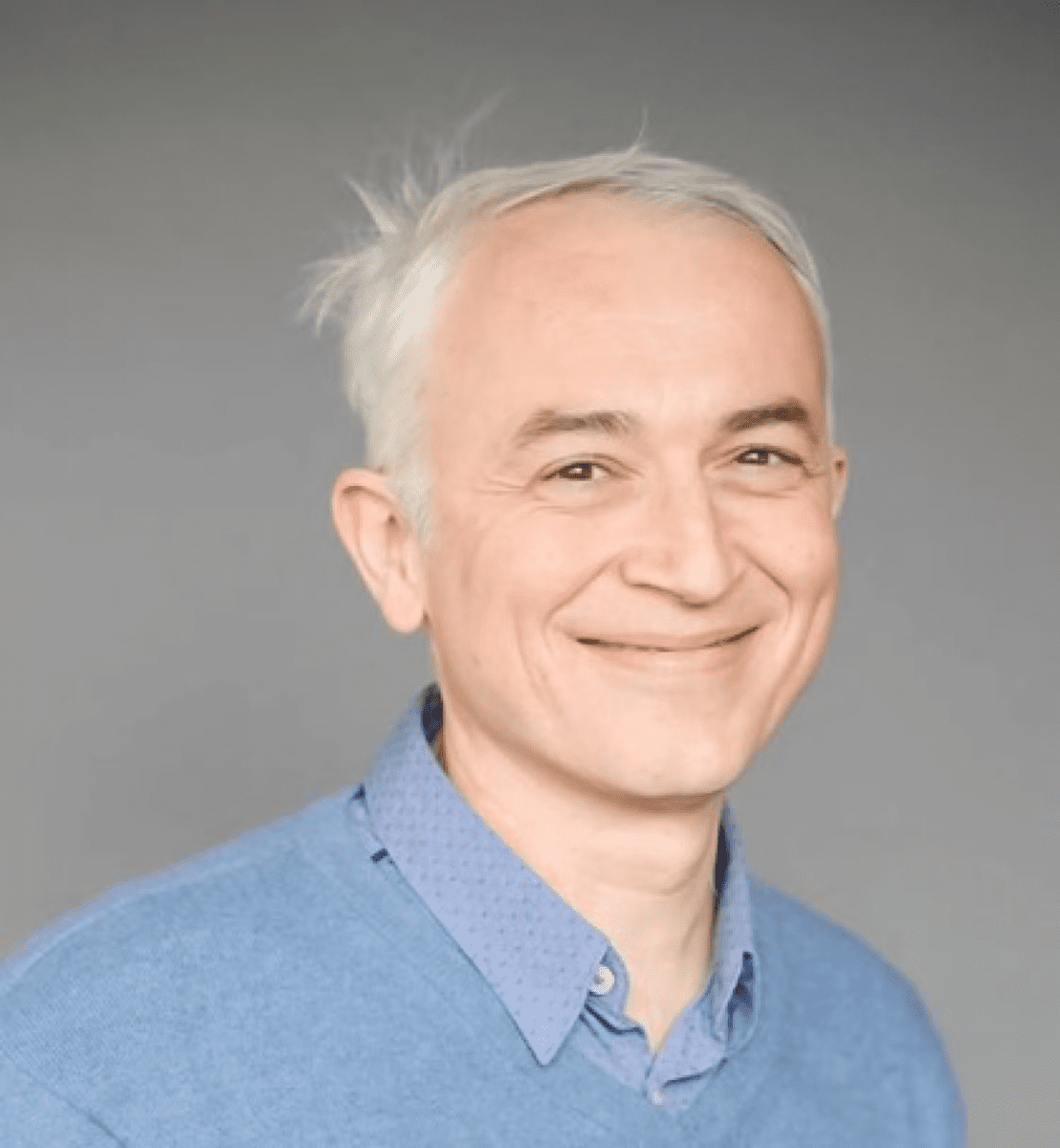
Professor Vladan Vuletić, Pollack Distinguished Lecturer
The University of Connecticut, Department of Physics is proud to announce Edward Pollack Distinguished Lecture will be on Friday, November 7th, 2025. The speaker is Prof. Vladan Vuletić, Department of Physics, MIT. The title of his lecture is “The Quantum Age: From Atomic Clocks to Quantum Computers” For the time and the location of the […]
[Read More]Lab tours for women in Science, Math, and Engineering
Prof. Menka Jain and her group hosted ~35 WiMSE students from UConn Storrs arranged by the Women in Math, Science and Engineering Learning Community. The goal of such lab tours is to provide female undergraduate students with a first-hand knowledge at the dynamic and impactful work being conducted at UConn in STEM fields, helping to […]
[Read More]UConn Honorary Degree Awarded to Alumnus, Manasse Mbonye, PhD 1996
Manasse Mbonye (UConn Physics PhD 1996, Advisor: Ron Mallett) was awarded an Honorary Doctor of Science degree, and was the Commencement Speaker at the UConn Commencement ceremony in Gampel Pavilion on May 12, 2025. Manasse has had a remarkable career in physics, politics and scientific administration since completing his PhD in Physics at UConn in […]
[Read More]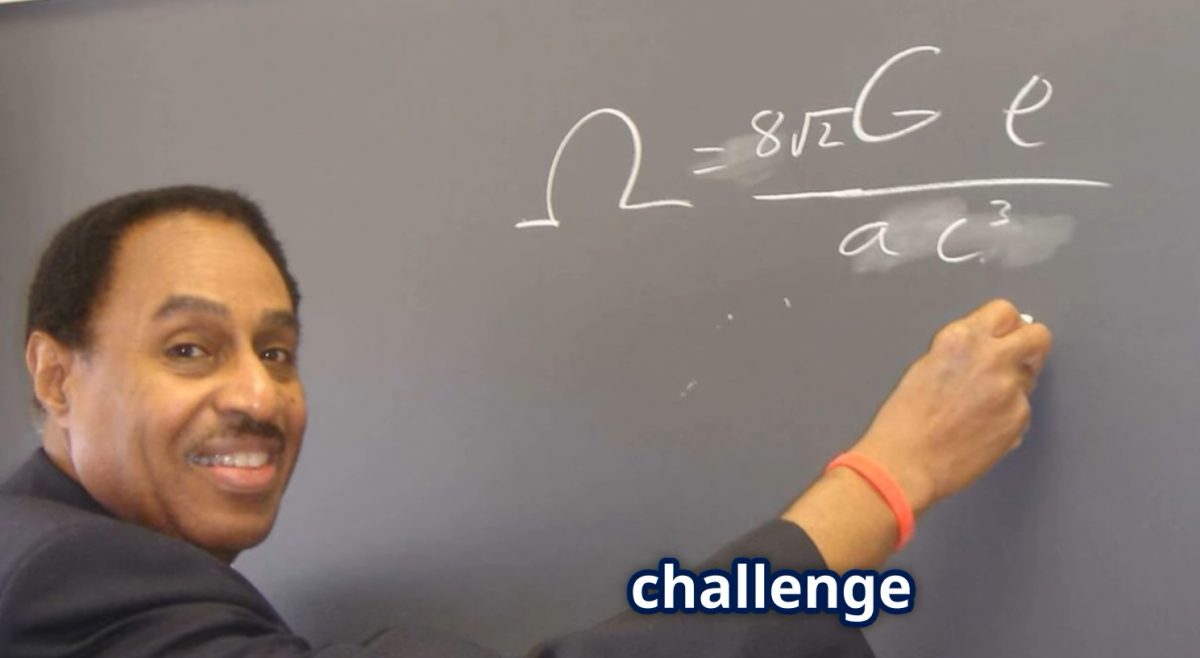
An article in Earth.com describes the research and the life story of Prof. Mallett
“…More than a scientific pursuit, Mallett’s story testifies to human resilience, intellectual courage, and hope’s enduring power. Whether his theoretical time machine ever materializes, his legacy is immeasurable—inspiring countless individuals to challenge conventional limits and perceive time not as an unyielding barrier, but as a boundless frontier awaiting exploration.”
[Read More]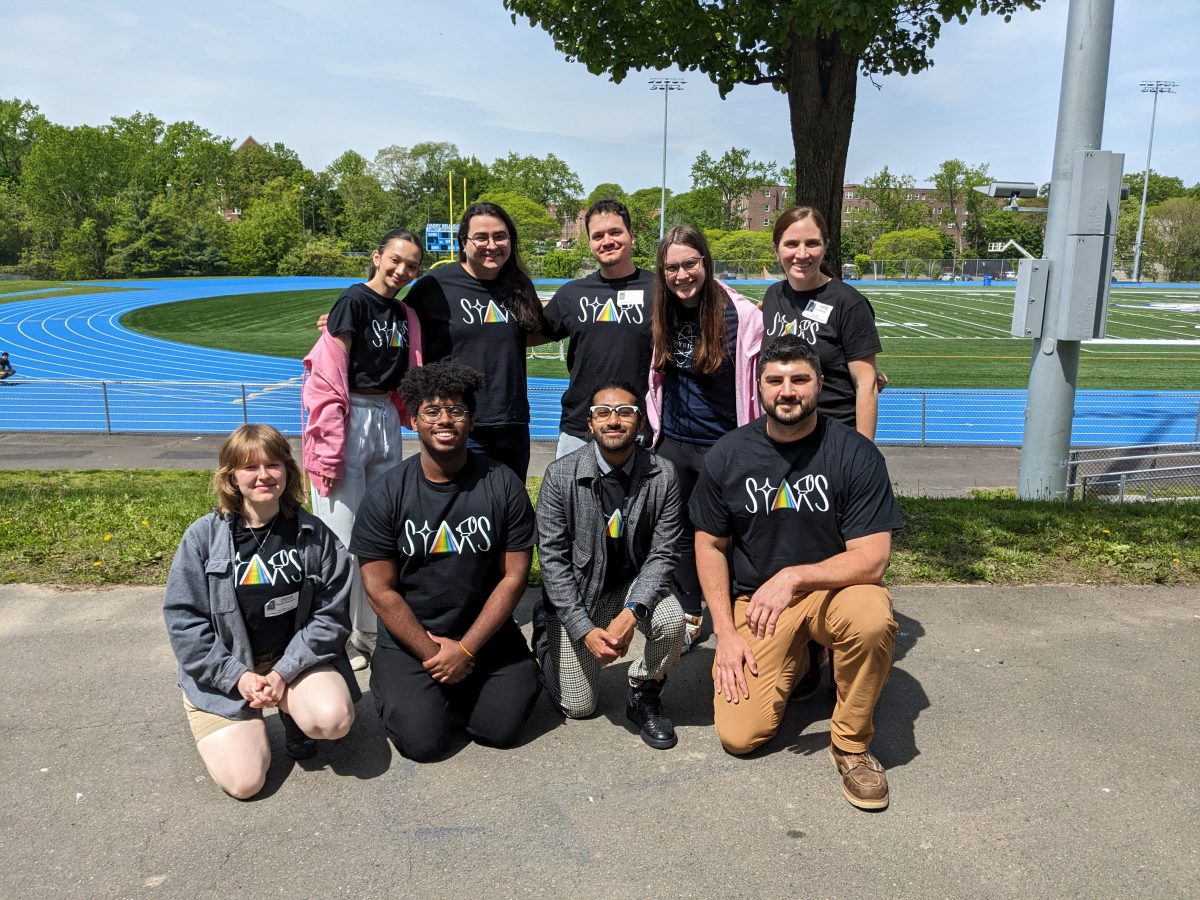
UConn STARs Visits Hartford Public High School in May 2025
The UConn STARs program had its annual outreach event at Hartford Public High School (HPHS) during the week of May 12-16, 2025. We taught four specially-crafted lesson plans to eight classrooms of students and hosted two lunchtime solar telescope observing sessions. The outreach event was a huge success. We estimate that we reached about 170 […]
[Read More]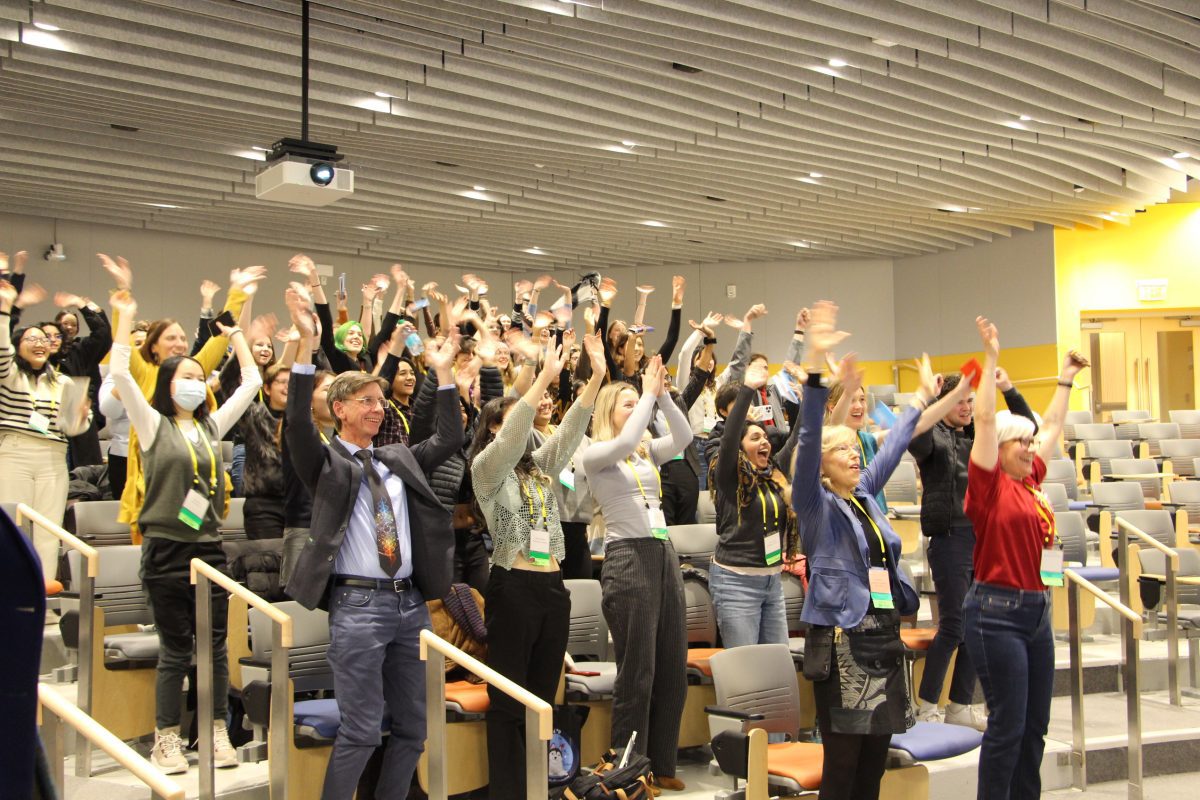
UConn Physics Department hosted the 2025 conference for Undergraduate Women and Gender Minorities in Physics
The Physics Department hosted the 2025 American Physical Society Conference for Undergraduate Women and Gender Minorities in Physics in January 24-26. This was achieved with the support of the College of Liberal Arts and Science, the Provost’s Office, and the Office of Sponsored Programs, the College of Engineering, the Institute of Material Sciences, the APS […]
[Read More]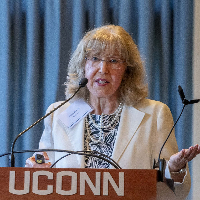
UConn Celebrates National Academies Members
On August 27, 2024, scholars, trustees, and friends of UConn gathered at the University of Connecticut School of Law to honor members of the university community elected to the National Academies of Sciences, Engineering, and Medicine. Established by an Act of Congress in 1863, the National Academy of Sciences was followed by the National Academy […]
[Read More]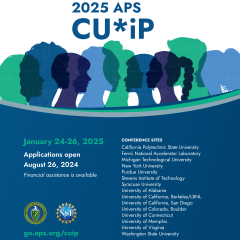
UConn Physics Department Hosting January 2025 CU*iP.
Every year, the American Physical Society (APS) sponsors CU*IP – Conference for Undergraduate Women and Gender Minorities in Physics – at several locations around the country. This year, led by Prof. Nora Berrah, UConn Physics applied to host this national conference in Storrs and our proposal was accepted for January 24-26, 2025! The purpose of […]
[Read More]
Nobel Prize Winner, Professor Adam Riess, Katzenstein Distinguished Lecturer
The University of Connecticut, Department of Physics is proud to announce the 26th Annual Katzenstein Distinguished Lecturer that will be on Friday, November 15th.
[Read More]
2024 Sigma Pi Sigma Honors Society Celebration!
Congratulations to 2024 Sigma Pi Sigma Honors Society Inductees!
[Read More]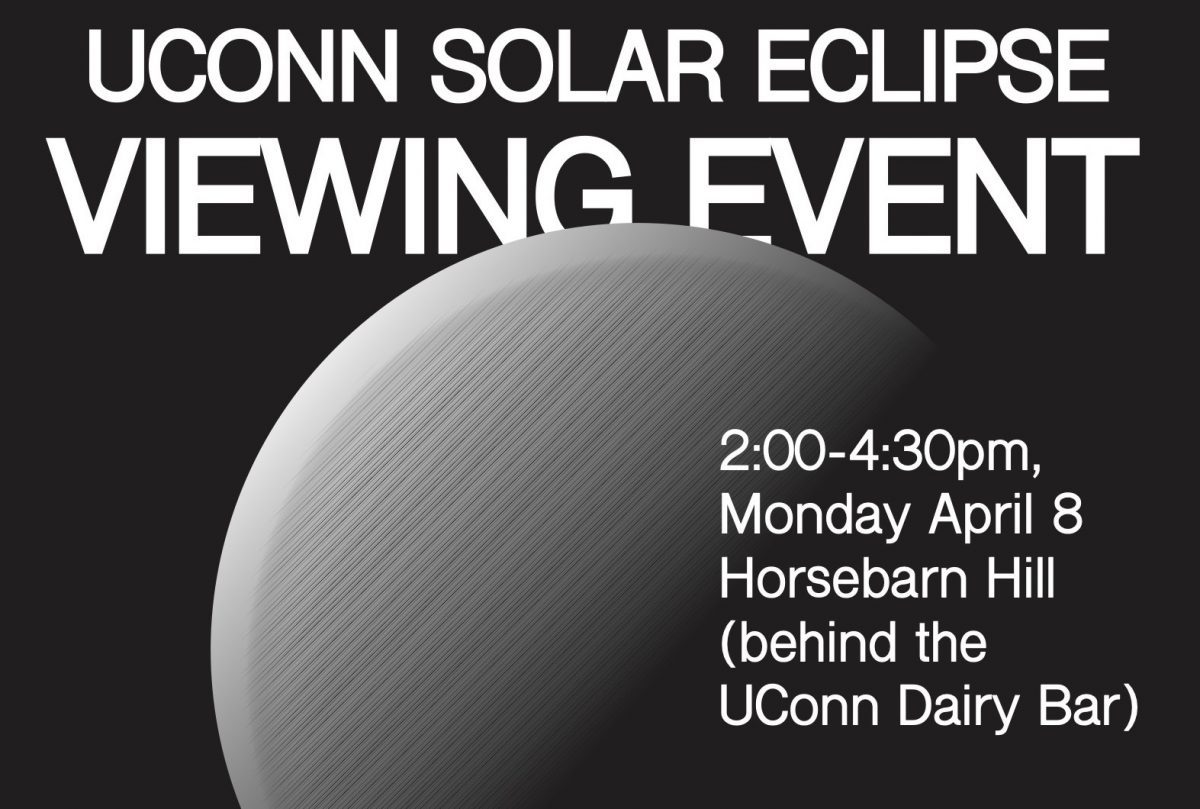
Solar Eclipse Viewing Event: 2-4:30pm Mon Apr 8 on Horsebarn Hill
UConn faculty and students will host a community event to view the solar eclipse at 2:00-4:30pm this Monday, April 8, on Horsebarn Hill (behind the Dairy Bar). Here in Storrs we’ll observe a maximum occultation of 92% at 3:28pm. This is a very exciting and special opportunity, since the next time that our location will […]
[Read More]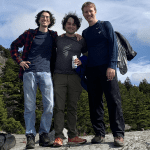
Physics Celebrates 51’st Annual Ascent of Mount Monadnock
On October 14, 2023 40-50 members and friends of the UConn Physics department took part in the 51’st annual ascent up Mount Monadnock, near Jaffrey, New Hampshire. After the hike, the then-hungry hikers descended to the campground near Gilson Pond and enjoyed some well-earned refreshments.
[Read More]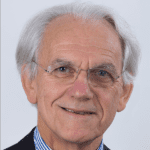
Nobel Prize Winner, Professor Gérard Mourou, Katzenstein Distinguished Lecturer
The University of Connecticut, Department of Physics, is proud to announce that on October 20, 2023, Gérard Mourou, professor and member of Haut Collège at the École Polytechnique and A. D. Moore Distinguished University Professor Emeritus at the University of Michigan and 2018 Nobel Prize winner, will be presenting the 25th Distinguished Katzenstein Lecture.
[Read More]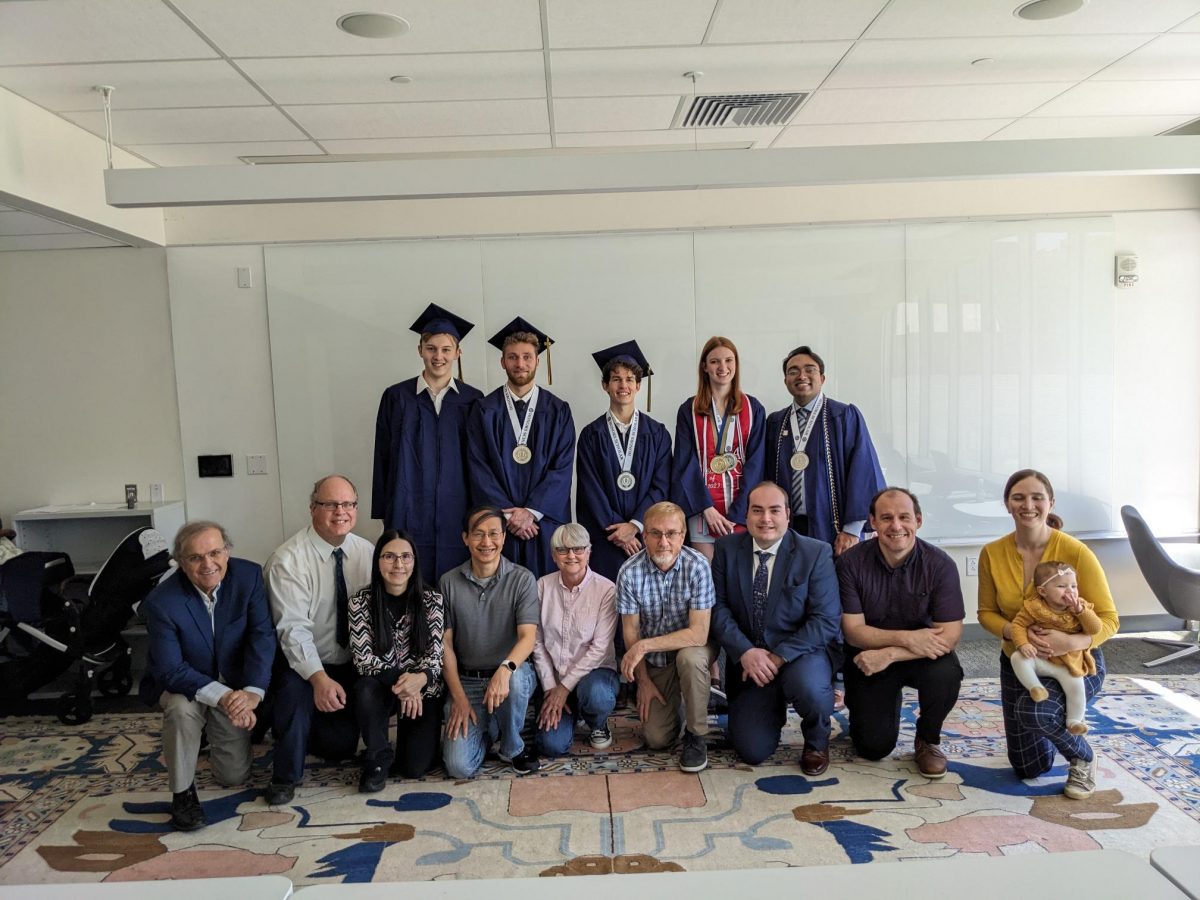
Graduation Reception 2023
Congratulations to our successful physics major graduate students!
[Read More]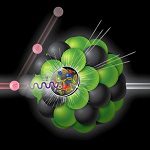
Department of Physics is hosting Summer School on Electron-Ion Collider
The Department of Physics is hosting UConn-NSF summer school on Parton Saturation and Electron Ion Collider (EIC). The School will take place in Storrs, from August 1 to August 10, 2023. The school chair is Professor Alex Kovner. The school website can be found at https://www.phys.uconn.edu/Conferences/saturation-eic/. The Electron-Ion Collider is the next big experiment in […]
[Read More]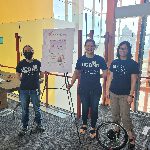
Physics Department runs Women in Science Outreach at the Connecticut Science Center
Promoting gender diversity and inclusion in the field of science, technology, engineering, and mathematics (STEM), the Connecticut Science Center’s Women in Science Initiative hosted a captivating outreach event led by UConn’s Sarah Trallero, Aslı Tandoğan, and Aislinn Daniels. This event took place on April 15th, 2023 at the Connecticut Science Center. In the outreach event, […]
[Read More]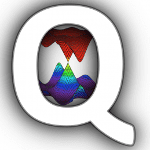
UConn Physics hosts Quantum Matter Conference, Dec 19-22
Quantum matter and materials have grown to be active areas of modern condensed matter. The fascinating properties of quantum materials might lead to technological applications such as spintronics, quantum technologies, and quantum sensors. The combination of new materials discoveries and the development of new probes of quantum matter has helped shape these topics into an […]
[Read More]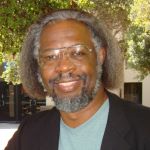
Visit by Dr. Sylvester James Gates
The University of Connecticut Department of Physics is pleased to announce the upcoming colloquium by Dr. Sylvester James Gates Jr. on November 18th in Gant West 002 from 3:30-4:45PM. Dr. Gates is a theoretical high-energy physicist who has made significant, pioneering contributions to supersymmetry, supergravity, and superstring theory. His colloquium will concern the ongoing efforts to […]
[Read More]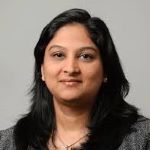
Prof. Jain organized International Workshop on Oxide Electronics
Associate Professor of Physics and Institute of Materials Science Menka Jain recently organized the 28th International Workshop on Oxide Electronics, 2-5th October, Portland, Maine. Other co-organizers were Charles H. Ahn (Yale University), Divine Kumah (North Carolina State University), and Ryan Comes (Auburn University). There were close to 150 attendees from all around the world. The […]
[Read More]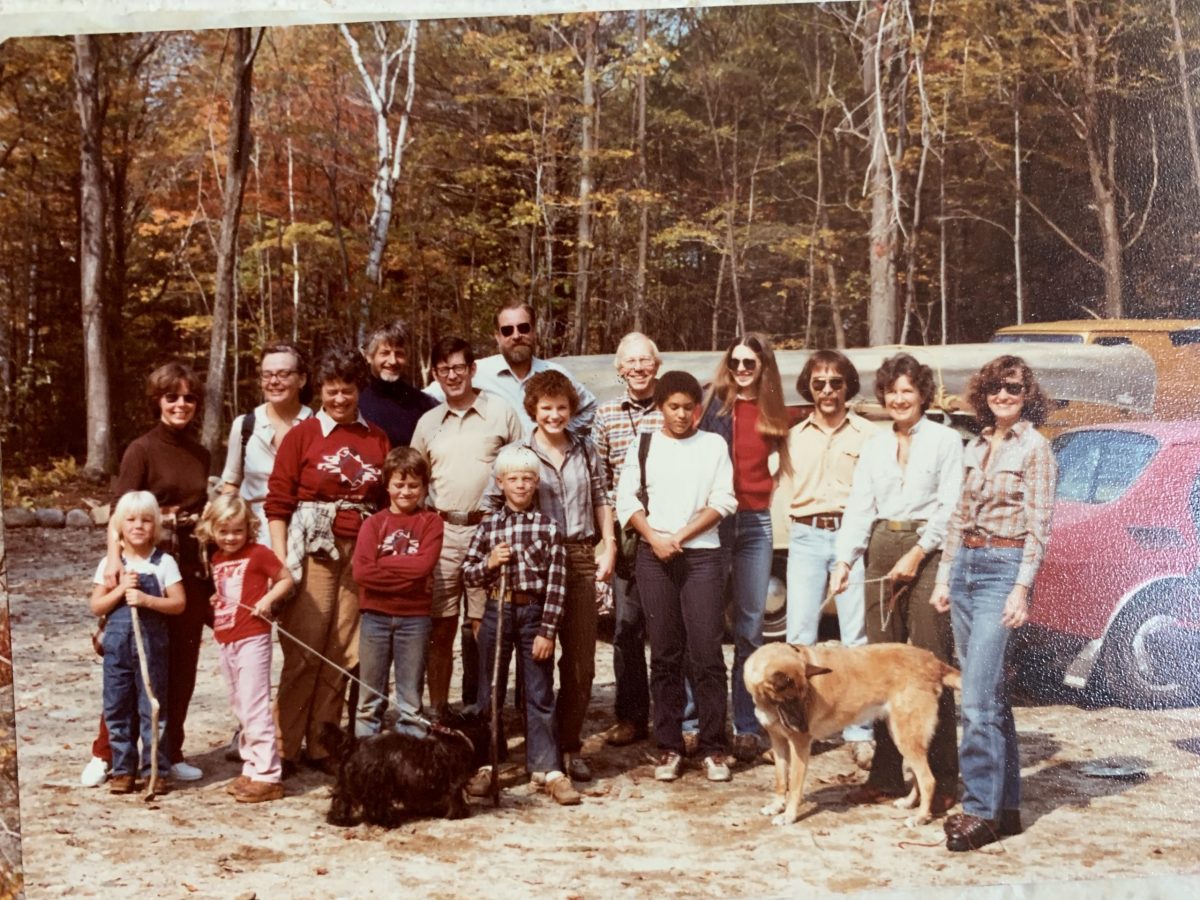
50th anniversary of annual physics department Mt. Monadnock hike
This coming October we’ll mark the 50th anniversary of the first hike up Mt. Monadnock by the Physics Department. We plan to hike Saturday, October 8th. Because the park recommends reservations, we will make reservations for a large group. Alumni are welcome and should contact Tom Blum or Alex Kovner as soon as possible to […]
[Read More]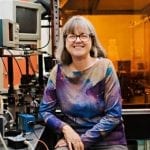
Nobel Prize Winner, Professor Donna Strickland , Katzenstein Distinguished Lecturer
The University of Connecticut, Department of Physics, is proud to announce that on September 23, 2022, Professor Donna Strickland of the Department of Physics and Astronomy at the University of Waterloo will be presenting the 2020 Distinguished Katzenstein Lecture. Prof. Strickland is one of the recipients of the 2018 Nobel Prize in Physics for developing […]
[Read More]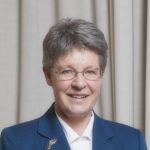
Professor Jocelyn Bell Burnell – 2019 Katzenstein Lecturer
The UConn Physics Department is delighted to announce that our 2019 Distinguished Katzenstein Lecturer will be Professor Dame Jocelyn Bell Burnell. Professor Dame Jocelyn Bell Burnell is world-famous for her discovery of pulsars in 1967. Pulsars are a special type of neutron star, the rotating dense remnant of a massive star. Pulsars have highly magnetic surfaces, and emit a beam of electromagnetic radiation […]
[Read More]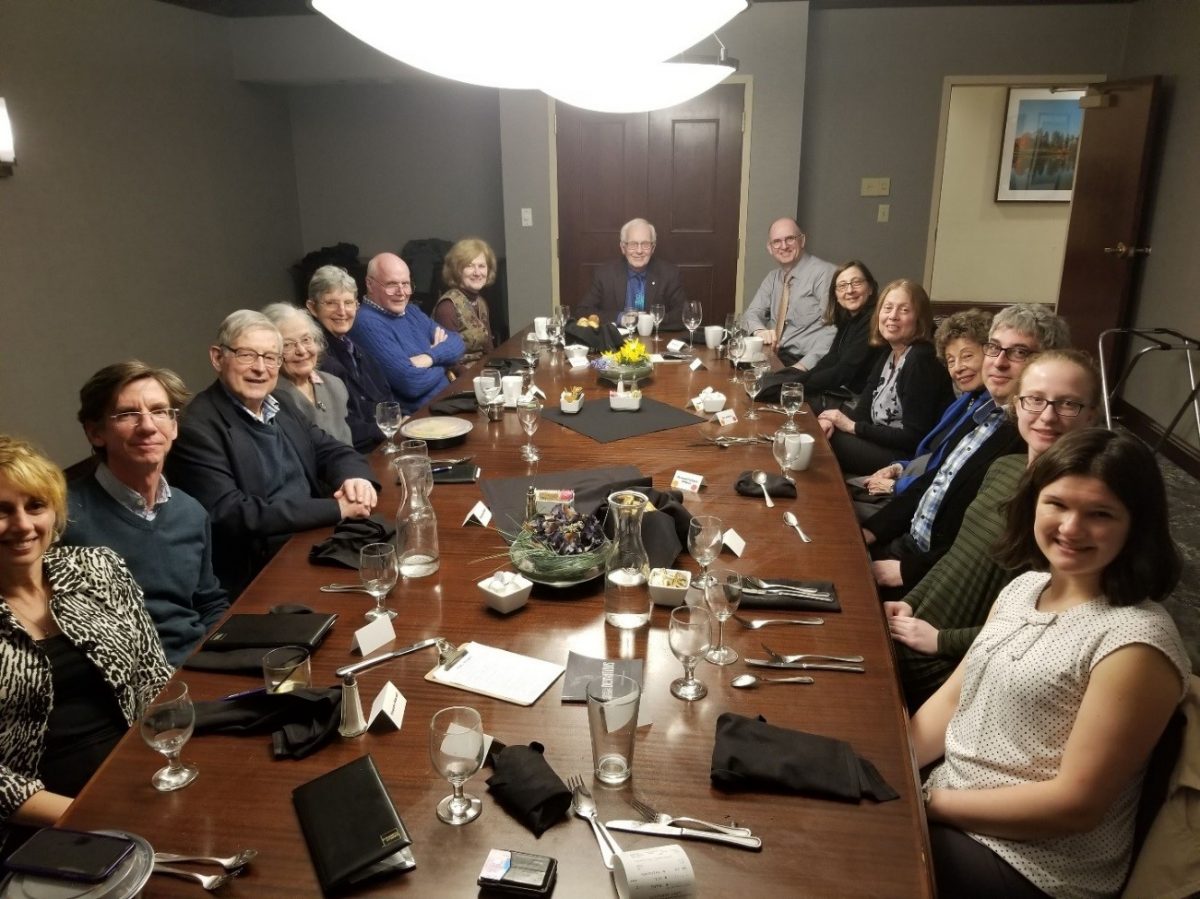
2019 Pollack Lecture
On April 11th and 12 of 2019 Prof. Paul Corkum of the Joint Attosecond Laboratory (University of Ottawa and the National Research Council of Canada) visited the department. Prof. Corkum’s main area of research is on the interaction of ultrashort laser pulses with matter broadly defined. His most notable contribution is perhaps the discovery of […]
[Read More]Charles Reynolds Lecture 2018: Prof Andrew Millis
The 2018 Reynolds lecture speaker was Prof Andrew Millis, a Professor of Physics at Columbia University and a co-Director of Center for Computational Quantum Physics at the Flatiron Institute. Dr. Millis’s research focus is theoretical condensed matter physics. He is the leading authority in theory of correlated materials, application of new theoretical ideas to actual […]
[Read More]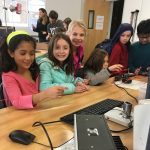
Goodwin School 3rd grade visits the Physics Learning Labs
About one mile from the Gant plaza, Goodwin Elementary School teaches some really bright kids. On January 15, 2019, science teacher Nancy Titchen and Goodwin teachers brought the entire 3rd grade class on a field trip to the Physics Learning Labs mock-up studio for some science fun. Students enjoyed a liquid nitrogen show, witnessed quantum […]
[Read More]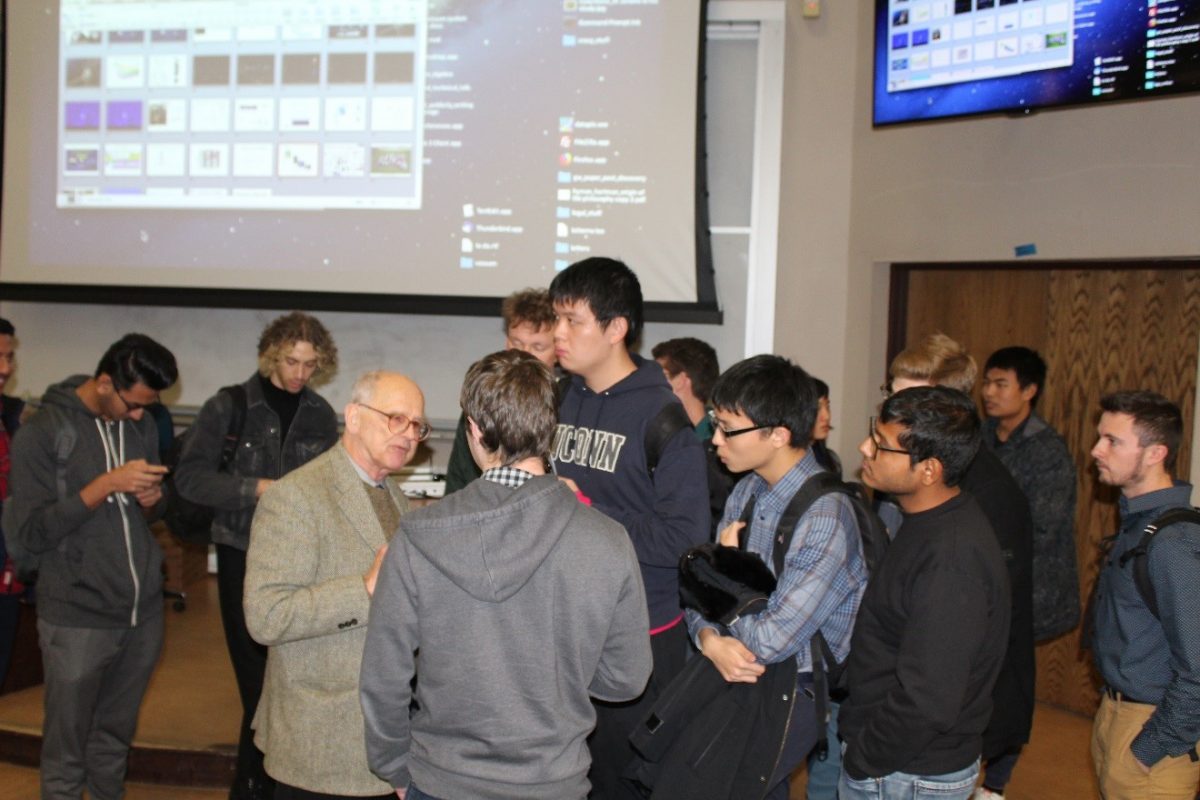
Professor Rainer Weiss: Katzenstein Distinguished Lecture
The Katzenstein Distinguished Lectures series continued in the 2018 academic year with its twenty second Nobel Laureate lecturer, with an October 26, 2018 lecture by Professor Rainer Weiss of the Massachusetts Institute of Technology. The title of Professor Weiss’ talk was “Exploration of the Universe with Gravitational Waves”, with abstract: The observations of gravitational waves […]
[Read More]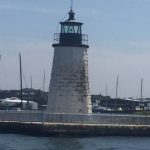
Workshop ‘Dynamic Quantum Matter’ organized by UConn faculty
Dynamic Quantum Matter, Entangled orders and Quantum Criticality Workshop, June 18- June 19, 2018, sponsored by UConn, NSF, Nordita, Villum Center for Dirac Materials, Institute for Materials Science. The conference focused on entangled and non-equilibrium orders in quantum materials.
[Read More]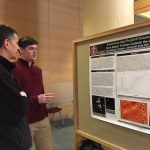
Annual Research Poster Day
The Physics Department Graduate Student Association, in collaboration with the faculty, organized the Annual Research Poster Day which was held this year on March 23, 2018. About 15 students presented their research in a poster presentation. Awards were presented to graduate students Erin Curry and Martin Disla, and an undergraduate student Sadhana Suresh.
[Read More]
Department, alumni celebrate career of Prof. Doug Hamilton
Friday afternoon on April 20, 2018 the UConn Physics Department held a colloquium in honor of Professor Douglas Hamilton on the occasion of his retirement from active service on the faculty. The colloquium was MC’ed by Prof. Jason Hancock, who surveyed the highlights of a career spanning four decades marked by notable accomplishments in research, […]
[Read More]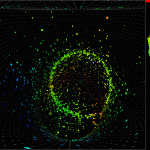
21st Annual Katzenstein Distinguished Lecture
Monday, March 26, 2018 The 21st Annual Katzenstein Distinguished Lecture was hosted by the UConn Physics Department, featuring Dr. Takaaki Kajita, 2015 Nobel Prize Winner from the University of Tokyo, speaking on “Oscillating Neutrinos.” After the lecture, a banquet with the speaker was held for members and guests of the department. We enjoyed welcoming alumni and […]
[Read More]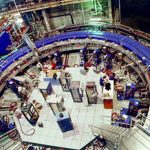
LQCD workshop to take place in Storrs
Muon g-2 Theory Initiative Hadronic Light-by-Light working group workshop
Workshop participants will discuss recent progress and plans to determine the hadronic light-by-light scattering contribution to the muon anomalous magnetic moment, which is expected to contribute the largest uncertainty in the Standard Model prediction. The goal of the workshop is to estimate current and expected systematic errors from lattice QCD, dispersive methods, and models and create a plan to address them in time for new experiments at Fermilab and J-PARC.
[Read More]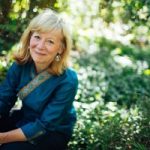
Special Lecture on Diversity and Inclusion
Solving the complex problems that we face in our world today requires a more talented workforce than we have ever needed before. Such a workforce must be comprised of a wide range of diverse talents and creative insights. No segment of the population can be ignored or overlooked in this talent search. This presentation will describe the most recent research that demonstrates the positive impact that social and informational diversity has on science and innovation, the reasons for this impact and the importance of committed leadership in achieving a strong and inclusive workplace where creativity and productivity is maximized.
[Read More]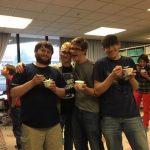
Department welcomes new students with annual Ice Cream Social
The UConn Physics Graduate Student Association sponsored a social event featuring UConn dairy bar ice cream to welcome back students after the summer break. Other regular events throughout the year sponsored by the PGSA include the Holiday Party in December, the Poster Exhibition Competition in April, and the Department Picnic in May.
[Read More]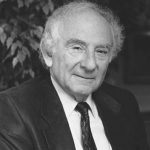
Katzenstein lecture brings Nobel Laureat, UConn alumni to Storrs
The Katzenstein Distinguished Lectures series continued in Fall 2016 for its 19th year, with an October 28, 2016 lecture by Professor Leon N. Cooper of Brown University, entitled “On the Interpretation of the Quantum Theory: Can Free Will And Locality Exist Together In The Quantum Theory?” Professor Cooper shared the 1972 Nobel Prize in Physics […]
[Read More]
Thousands attended eclipse viewing hosted by UConn Physics
On Monday, August 21, 2017, the moon eclipsed the sun across the US. What began as a small organic outreach activity blossomed into an epic community event. With help from UConn communications, the UConn Physics club, and staff in the physics department, astronomers Jonathan Trump, Cara Battersby, and Kate Whitaker hosted an eclipse viewing event open […]
[Read More]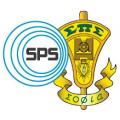
Physics undergraduates honored at annual SPS lecture and banquet
Spring 2017 the UConn chapter of the Sigma Pi Sigma Honor Society inducted 11 new members: Filip Bergabo, Vincent Flynn, Kevin Grassie, Daniel Kovner, Jack Lichtman, Paul Molinaro, Connor Occhialini, Brian Roy, Andrew Sampino, Theodore Sauyet, and Hope Whitelock. The academic scholarship of this group is truly outstanding, and probably unprecedented in the chapter’s history. […]
[Read More]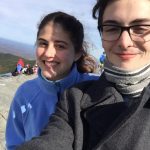
Annual group hike up Mount Monadnock shows charms of New England fall
Each fall for the past decade or more, members of the UConn Physics Department have gathered one clear day near the peak of fall colors for a group hike up Mount Monadnock. Located in the White Mountains of New Hampshire not far from Keene, Monadnock is well known for its accessibility to a wide range […]
[Read More]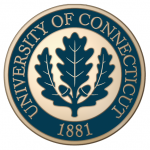
Employee appreciation
On Friday, April 15, the department will be hosting a special refreshments hour from 3:00-4:00PM in the Physics reading room in recognition of all Physics employees. This year we are celebrating milestones for the following people: Michael Rozman – 15 Years of service Edward Eyler – 20 years of service Dawn Rawlinson – 25 years […]
[Read More]